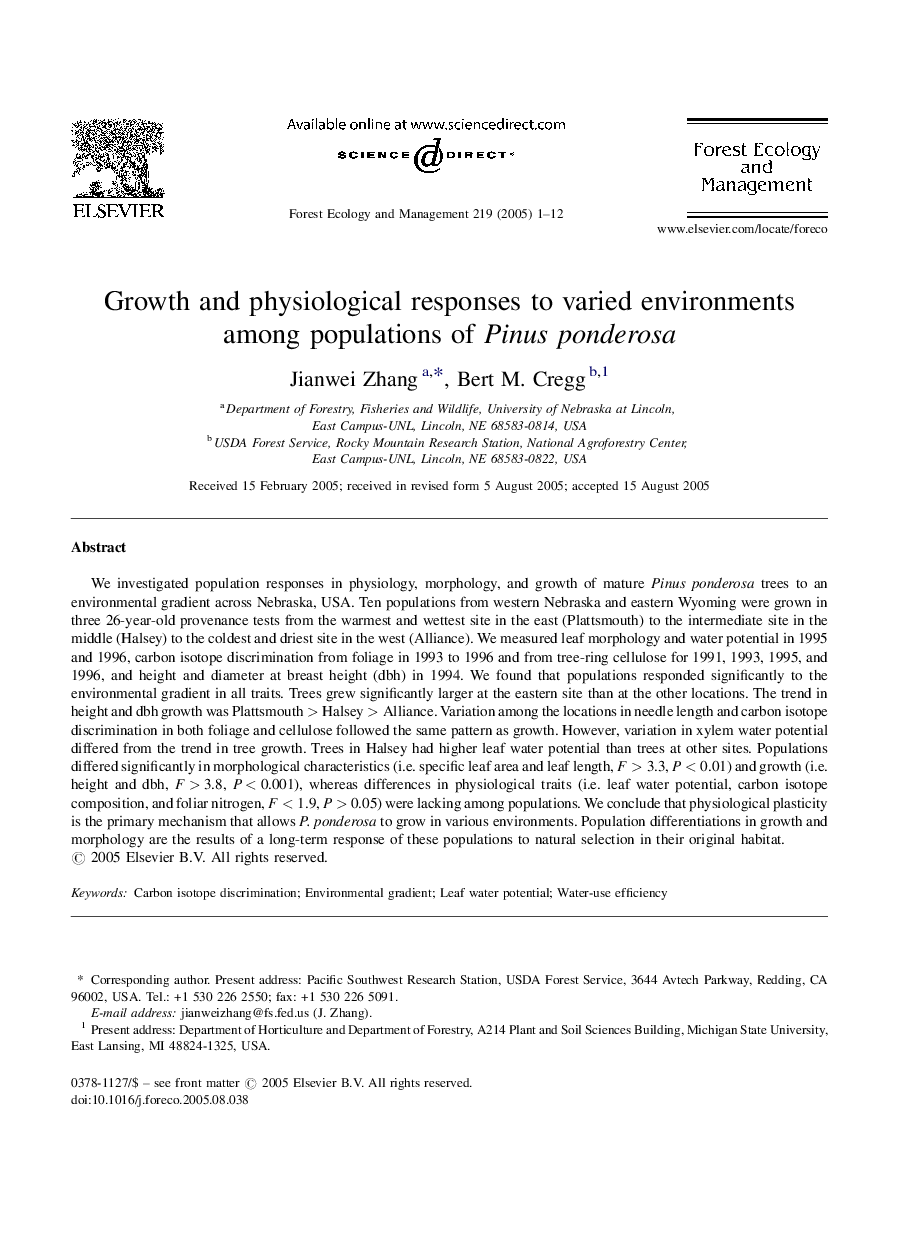| Article ID | Journal | Published Year | Pages | File Type |
|---|---|---|---|---|
| 10250679 | Forest Ecology and Management | 2005 | 12 Pages |
Abstract
We investigated population responses in physiology, morphology, and growth of mature Pinus ponderosa trees to an environmental gradient across Nebraska, USA. Ten populations from western Nebraska and eastern Wyoming were grown in three 26-year-old provenance tests from the warmest and wettest site in the east (Plattsmouth) to the intermediate site in the middle (Halsey) to the coldest and driest site in the west (Alliance). We measured leaf morphology and water potential in 1995 and 1996, carbon isotope discrimination from foliage in 1993 to 1996 and from tree-ring cellulose for 1991, 1993, 1995, and 1996, and height and diameter at breast height (dbh) in 1994. We found that populations responded significantly to the environmental gradient in all traits. Trees grew significantly larger at the eastern site than at the other locations. The trend in height and dbh growth was Plattsmouth > Halsey > Alliance. Variation among the locations in needle length and carbon isotope discrimination in both foliage and cellulose followed the same pattern as growth. However, variation in xylem water potential differed from the trend in tree growth. Trees in Halsey had higher leaf water potential than trees at other sites. Populations differed significantly in morphological characteristics (i.e. specific leaf area and leaf length, F > 3.3, P < 0.01) and growth (i.e. height and dbh, F > 3.8, P < 0.001), whereas differences in physiological traits (i.e. leaf water potential, carbon isotope composition, and foliar nitrogen, F < 1.9, P > 0.05) were lacking among populations. We conclude that physiological plasticity is the primary mechanism that allows P. ponderosa to grow in various environments. Population differentiations in growth and morphology are the results of a long-term response of these populations to natural selection in their original habitat.
Keywords
Related Topics
Life Sciences
Agricultural and Biological Sciences
Ecology, Evolution, Behavior and Systematics
Authors
Jianwei Zhang, Bert M. Cregg,
